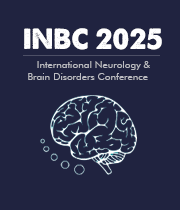Title : Deep learning-based models for ventricular segmentation in hydrocephalus: A systematic review and meta-analysis
Abstract:
Ventricular segmentation is a critical step in neuroimaging data evaluation neuroimaging data, particularly in hydrocephalus. Current methods are mainly based on 2-dimensional measurements and ratios. Traditional manual and semi-automatic ventricular segmentation are time-consuming, operator-based, and lack flexibility in handling numerous radiological features. Recently, deep learning (DL)-based models have been developed to perform ventricular segmentation and have shown promising outcomes. The objective of the current study was to evaluate the performance of DL-based models in ventricular segmentation in the hydrocephalus setting. On December 5, 2024, a systematic search was conducted using an individualized search query in four electronic databases: PubMed, Embase, Scopus, and Web of Science. Studies that reported the mean dice similarity coefficient (DSC) of DL-based models in ventricular segmentation in patients with hydrocephalus were included. The mean DSC for the best-performance model was extracted. Twenty-four studies with 2911 patients were included. The mean DSC ranged from 0.671 to 0.99 across the best-performance models. The meta-analysis revealed a pooled mean DSC of 0.89 (95%CI: 0.84-92). The subgroup analysis yielded a pooled mean DSC of 0.88 (95%CI: 0.80-0.96) for magnetic resonance imaging (MRI)-based models, 0.91 (95%CI: 0.86-0.95) for computed tomography (CT)-based models, and 0.84 (95%CI: 0.81-0.87) for ultrasound (US)-based best-performance DL-based models. DL-based models have demonstrated favorable outcomes in ventricular segmentation in patients with hydrocephalus. Application of these models in clinical practice can optimize the treatment protocol and enhance the clinical outcomes of hydrocephalus patients.



